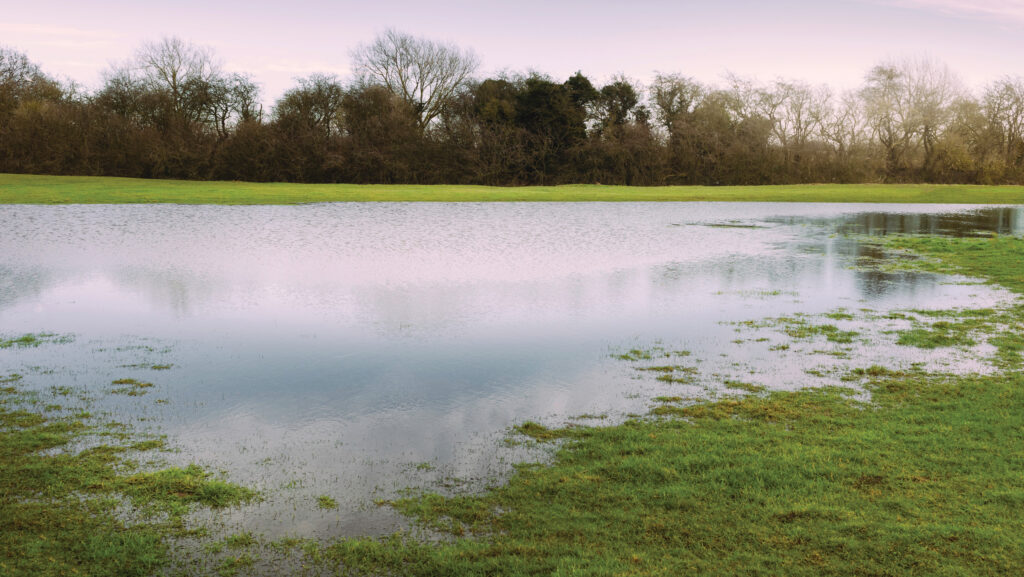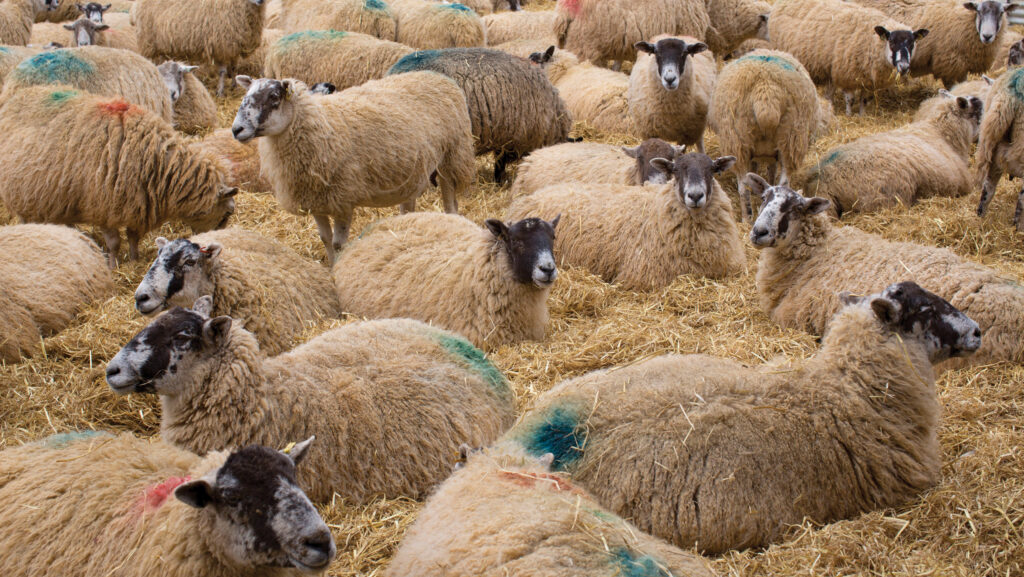Tips to prepare a contingency plan to beat another bad winter
 © Adobe Stock
© Adobe Stock Farmers must put in place a contingency plan following this year’s wet spring and carry out a feed budget well in advance.
Independent sheep and beef consultant Liz Genever advises farmers to avoid making “knee-jerk” reactions following a difficult year.
The seemingly never-ending winter was followed by a sodden spring, which forced many livestock farmers to house animals for much longer than anticipated.
See also: Why winter bird food option stacks up for cattle grazing
No system was immune, reflects Liz. She says some beef and sheep producers might be considering delaying lambing and calving to coincide with better conditions, but adds it is important to remember that 2023/24 was extreme in its weather patterns.
Instead, she cautions producers to look at their whole system.
“Most people lamb earlier to hit good [lamb] prices, but we are seeing good prices post-Christmas now,” she says.
“People need to think how moving lambing dates would affect their whole system, as well as price returns, rather than just doing it to avoid a wet window that might happen at any time from March to May.”
Many beef farmers might wish to move to later calving to allow it to be carried out outdoors, but the cow breed must be robust enough to cope with the change.
While it is impossible to predict good weather, Liz says there are steps farmers can take to ensure some security, should the weather become unfavourable.
“Farmers can be made to feel powerless because of the weather, but there are things you can do to take back control by making decisions several months in advance.”
Here are her top tips to smooth the transition to a more robust system.
1. Make a feed budget
The first step is to carry out a winter feed budget in August/September. “This means you still have time to manipulate it ahead of the winter by putting on more fertiliser or adjusting stocking rates. By October, options are limited because nothing is going to grow,” Liz cautions.
She says farmers should build a 20% buffer into winter feed budgets and reassess stocks in December.
Rather than having the expense of erecting more sheds, she suggests farmers look carefully at different options.
“An increasing number of people are offering contract grazing for lambs whereby you do a profit share.
“The owners could then still benefit from the higher lamb prices after Christmas, but they don’t need to look after them for a few months.”
2. Spread risk when growing winter crops
Spreading risk by growing a mixture of winter crops will help should some of them fail, she advises.
“In 2022, a lot of cover crops failed following frost. Farmers have learned the hard way: don’t put the same mix in everywhere.”
Instead, Liz advocates growing a mix of brassicas such as kale, stubble turnips and fodder beet, and cover crops like vetch and oats.
“The more diversity you have, the better from an insurance point of view, and it is also good for soil health and biodiversity,” she adds.
3. Remember, simplicity is best
Whatever the type of system, Liz recommends having as few groups of animals as possible to make feeding easier.
“If you are lambing or calving from January to May, it means having different groups with different [energy] requirements. This can be challenging to manage.”
She says it also makes it very difficult to allocate costs accurately.

This year’s wet spring forced many farmers to keep stock in for longer than expected © Tim Scrivener
4. Consider lambing and calving periods carefully
Shorter lambing or calving periods can reduce labour and feed costs, but farmers must assess the impact this will have on their whole system.
“Evaluating the change in lambing and calving dates is fundamental,” says Liz, who adds farmers must look at supply and demand, as well as labour availability.
For example, for farms with arable crops, lambing in February suits best so that lambs are sold before harvest starts, she explains.
She warns farmers also need to set “realistic ambitions”: “Within one year, you can go from six weeks’ lambing to two cycles quite easily, but calving is more challenging – you can adjust it by three to four weeks a year.”
Duncan Nelless, Thistleyhaugh Farm, Morpeth
Northumberland farmer Duncan Nelless is reducing his calving period and pushing back lambing from March to April.
The decision has been driven by a desire to maximise grass and minimise labour.
Until recently, 550 ewes lambed indoors, starting 20 March, to enable them to be recorded for RamCompare.
But the RamCompare group will now be lambed outdoors with the main flock of 1,250 performance-recorded Lleyns from 15 April.
“It’s easier to lamb outside – and we have the next generation coming on board, and they like lambing outside,” explains Duncan, who farms alongside his brother, Angus, and nephew, Joe.
The Nellesses have also decided that from next year, calving will coincide with lambing, rather than starting two weeks earlier, and they are condensing the calving period from eight weeks to six.
This is partly to prevent a recurrence of problems that arose after some heifers mismothered in the spring storms, and partly to streamline workload.
Forage
A secondary reason for these changes is that the family are very cost-focused and want to graze as much forage in situ as possible to spare the expense of making hay and silage.
They are no longer growing turnips and rape because being organic limits their options for pest control. Instead, they are moving towards using clover and plantain in grass mixes.
“We are considering if SFI [Sustainable Farming Incentive] winter bird seed options would fit in and give us an early spring buffer,” adds Duncan.
Cattle are kept outside year-round on deferred winter grass or bale-grazing, which frees shed space should sheep need to be housed to save on spring grass.
After scanning, when sheep have low energy requirements, they are fed hay or lower-quality silage, with higher-quality red clover silage saved for late pregnancy.
Stock condition is also used as a buffer against manage winter weather, he says: “We like cows going into winter with plenty of [body] condition, usually score 4. This winter, some of the cows came through score 2.5-3, but calved well and are looking well now.”
In the past year, the Nellesses have taken on a 356ha (880-acre) hill farm on a five-year farm business tenancy. They are now growing numbers in-house to preserve the high health status of their closed flock and herd.
Duncan hastens to add: “We are aware of the cost of overstocking it. We don’t want our stocking rate to mean our labour, machinery and building costs increase.”
Instead, he wants to find a “sweet spot” that will allow them to carry grass covers into the winter, reducing feed costs and making their system more resilient to whatever the weather brings.
Farm facts: Thistleyhaugh Farm, Morpeth
-
- Farming 810ha, half owned, half rented
- 285 Angus suckler cows and 70 bulling heifers
- 1,800 performance-recorded Lleyn ewes and 600 ewe lambs
- Steers finished at 18-22 months off forage and sold to Dovecote Park
- Sells breeding ewes and rams, with finished lambs sold to Pilgrims
